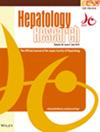Proximal splenic artery embolization for treatment of refractory ascites, a single-center experience
Abstract
Aim
Refractory ascites from portal hypertension can be managed with regular large-volume paracentesis (LVP) or transjugular intrahepatic portosystemic shunt (TIPS). Large-volume paracentesis is clinically unsatisfactory and many patients are ineligible or relatively contraindicated for TIPS or Denver shunt. Proximal splenic artery embolization (PSAE) using coils or plugs reduces but does not completely stop splenic arterial inflow, differing from distal splenic artery embolization techniques. By reducing splenic arterial inflow, splenic vein outflow is also decreased, lowering portal pressure and thus treating refractory ascites.
Methods
In this institutional review board-approved single-center retrospective study, electronic medical records were reviewed to obtain demographics and baseline clinical and laboratory data, paracentesis data before and after PSAE, PSAE procedural details, and follow-up imaging up to 12 months post-PSAE. Mixed-effects models were used for statistical analysis.
Results
Ten patients with LVP-dependent ascites meeting inclusion criteria underwent PSAE for refractory ascites from 2017 to 2024. Prior to PSAE, four patients had TIPS, three had liver transplants, and the remaining three were neither TIPS nor transplant candidates. In the month before PSAE, patients averaged 3.8 ± 1.7 paracentesis sessions, draining a total of 20.84 ± 10.39 L of fluid monthly. Post-PSAE, the number of paracentesis sessions decreased to 2.1 ± 2.7, 1.0 ± 1.7, 0.4 ± 1.1, and 0.0 ± 0.0 at 1, 3, 6, and 12 months, respectively (p = 0.03). Corresponding ascitic volume drained decreased to 8.7 ± 10.3, 2.7 ± 6.4, 2.0 ± 5.4, and 0.0 ± 0.0 L (p = 0.01). Over the 12-month follow-up period, 6 of 10 patients became LVP-independent.
Conclusion
Proximal splenic artery embolization can improve refractory ascites in certain patients with portal hypertension, thus providing safe and effective treatment as an alternative to TIPS.


 求助内容:
求助内容: 应助结果提醒方式:
应助结果提醒方式:


